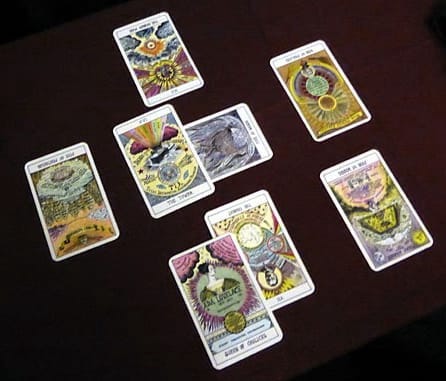Suzanne Treister Explains It All
With an ambitious, innovative, and entirely original Tarot project . . .
I’m still trying to fathom the extent (and intent) of Suzanne Treister’s Hexen 2.0 project, but I’ll tell you what I’ve figured out so far. Beginning with—these comments from a 2013 New York Times review of the Hexen installation, then showing at a New York gallery:
The British artist Suz…




